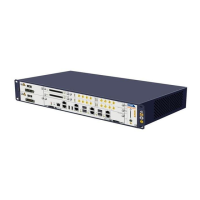The key services of the subsystems of the ZXR10 ZSR V2 software are:
Hardware drive subsystem: Provide the software drives for the MPFU, the PIU, the
backplane, the fan and the power supply.
Distributed operating system platform: A real-time operating system which is the
core of the ZXR10 ZSR V2 software system is responsible for managing the
hardware system architecture of the entire system and providing a unified operating
platform for all the application programs on the entire software system. It is known
for high reliability, real-time feature, self-healing feature, maintainability and
encapsulation.
L2 protocol subsystem: It implements the drive of the switching chip, L2 link control
and management protocols. At the same time, it offers support to the L3 protocols.
IP routing subsystem: It is the core of the router software system. It runs IPv4 and
IPv6 routing protocols, including RIP, OSPF and BGP protocols (the multicast
routing protocol is included). This system is responsible for routing data reception
and storage, entire routing table establishment, route selection, forwarding and
interaction, and routing table maintenance.
Unicast routing protocol subsystem: Via exchanging the information among different
routers in the network, it collects the network topology information, and forms an IP
unicast routing table. In addition, it sends the routing information to the IP forwarding
layer to forward the unicast IP packet.
Multicast routing protocol subsystem: It generates the routing table for the bottom

